The true story of eight nazi spies who landed on American shores via U-Boat at the height of WWII.
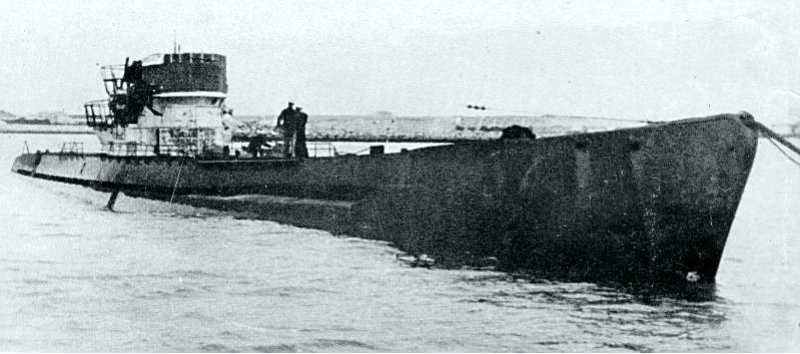

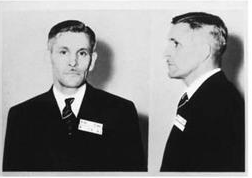


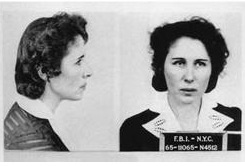
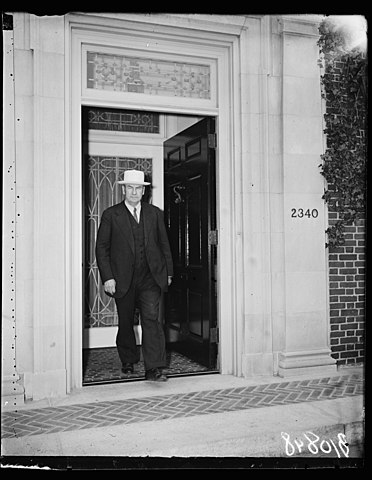
Podcast: Play in new window | Download
Subscribe: RSS
The true story of eight nazi spies who landed on American shores via U-Boat at the height of WWII.







Podcast: Play in new window | Download
Subscribe: RSS
Martyr and Saint, Savior of France, National Icon, All by the Age of Nineteen


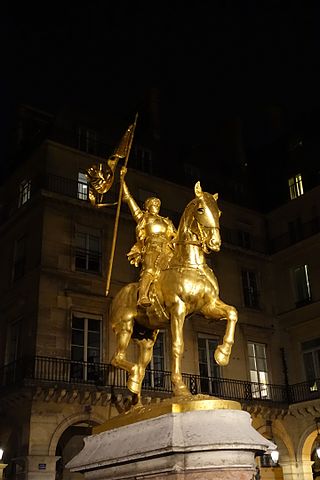
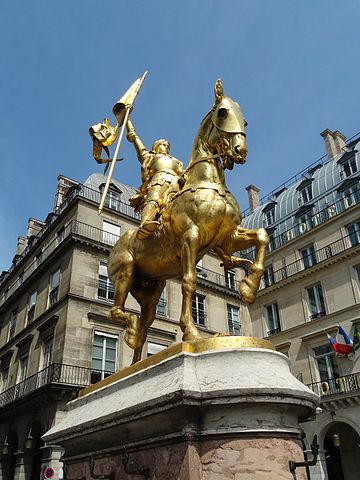
Podcast: Play in new window | Download
Subscribe: RSS
Martyr and Saint, Savior of France, National Icon, All by the Age of Nineteen

Among the more driven individuals attempting to pry Joan out of the grasp of de Luxembourg was Pierre Cauchon, the Bishop of Beauvais. Cauchon was a former Dean of the University of Paris, a chaplain to the Duke of Burgundy, as well as an ambitious and calculating high-ranking cleric. Compiegne was in the diocese of Beauvais and Cauchon reasoned that any ecclesistical proceeding should be handled by himself. Cauchon also understood that whoever succeeded in convicting and punishing Joan would establish himself prominently in the Roman Catholic hierarchy. Cauchon additionally had a personal axe to grind as it was Joan’s incursion into Rhiems and the territory around Beauvais that had chased pro-English figures like Gauchon out of the area. For the moment, he had relocated to Rouen, which was also the location of the administration of the English occupiers.
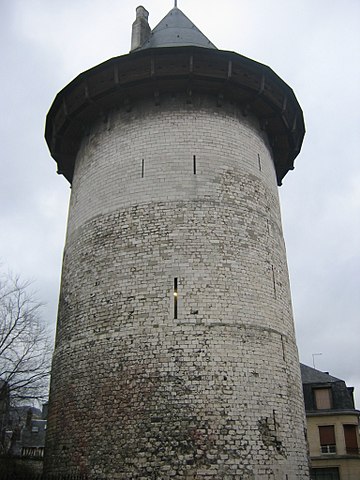
Hearing rumors of such a transaction, Joan attempted to escape from her rooftop cell in the keep of de Luxembourg’s fortress at Beaurevoir. From an estimated seventy feet in the air, Joan attempted to tie together pieces of bedding and cloth. During the process these tore, sending her to the completely uncushioned ground below. Most likely unconscious for two days, she eventually regained her vitality. Possibly her escape was actually a suicide attempt but to admit such an inclination was again a grave blasphemy.

Joan was dragged to the fourth and highest platform and chained and bound to the stake by the official executioner. Later, he would complain that the stake was so high he could not apply the customary rope around the victim’s neck to employ strangulation, a merciful alternative to actual burning. The condemned was wearing a gray, sleeveless garment that stretched below her knees. On her head, a crude crown with the words “Heretic, relapse, apostate, idolater.” Around her neck a small, wooden crucifix, fashioned for her at the last moment. A sympathetic priest, assigned to comfort her in her last minutes returned to her vicinity with a tall crucifix that he had retrieved from a nearby church. Joan shouted to him, the din from the jeering crowd rising with each passing minute.
“Hold it before my eyes so I can see it until the last!!”
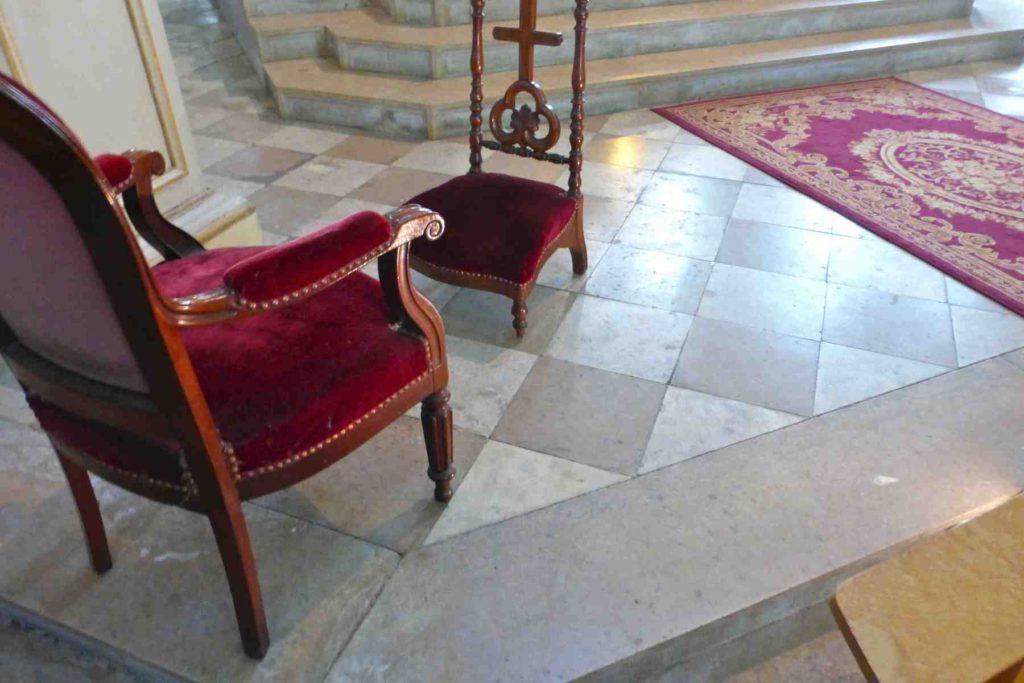
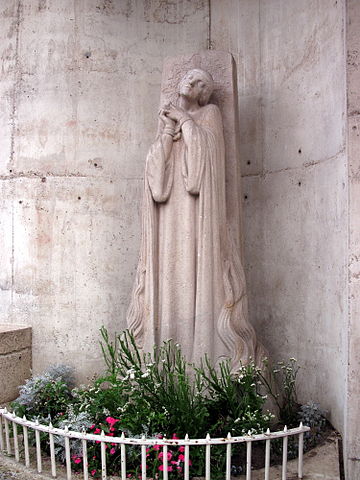
Podcast: Play in new window | Download
Subscribe: RSS
The true story of the television scandal that shocked America.

The showdown between the two men continued on December 5, 1956, Stempel having accumulated 66,500 dollars. The first show again resulted in a 21-21 tie. The tension built as the dashing college educator tried to pull off the upset, but in the fourth game Herb Stempel pulled out to a 16-0 lead and seemed on the brink of successfully moving on. 21 had an interesting wrinkle in which contestants were asked after the second round of questions if they wished to stop the game. Because they were in a soundproofed booth they did not know their opponent’s score and were instructed not to discuss specifics when their microphones and headsets were turned backed on.
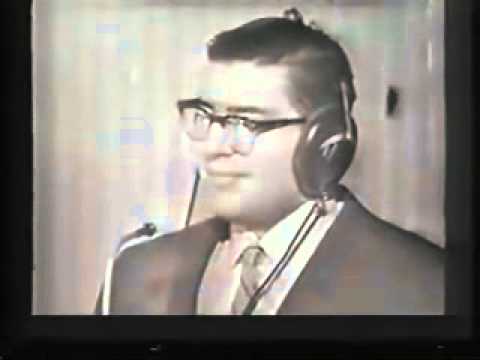
His appearance on 21 should have been a life changing event and a stepping stone to prominence and further achievement. But for a variety of reasons, it hadn’t turned out that way. Stempel’s background was the complete inverse of Charles Van Doren. An only child and a three year old when his father died, Stempel was raised by his mother who left him alone in their Bronx tenement while she worked during the day. An excellent student with a 170 IQ, Stempel did graduate from the academically demanding Bronx High School of Science. Like many Americans, he joined the Army in 1942 and remained in the military for eight years, eventually working in military intelligence. He finally left the service in 1952 to enroll at the City College of NY. While a student, Stempel survived on money provided by a trust fund set up for his wife, Toby, the daughter of a successful hosiery manufacturer.

Charles Van Doren finally met his match in Vivian Nearing, an attorney and the wife of a contestant that Van Doren already had defeated. He was tripped up on a question involving obscure current ruling monarchs, failing to identify King Baudoin of Belgium. But, along the way, Charles Van Doren became an overnight celebrity. He won $128,000 on the program and appeared on the cover of the February 11, 1957 edition of Time Magazine with an accompanying glowing profile His appearance and popularity was so impressive that in April of 1957, he was offered a three year contract by NBC at fifty thousand dollars a year.

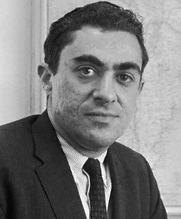
The film Quiz Show focuses on the efforts of one person, Richard Goodwin, played by Rob Morrow, a congressional investigator whose supposed efforts singlehandedly brought the Quiz show scandal to public attention and congressional oversight. In fact, long before Congress or Goodwin got involved, New York newspapers and the Manhattan District Attorney’s office were already investigating rumors and allegations swirling around several quiz show productions.
Podcast: Play in new window | Download
Subscribe: RSS
The true story of the television scandal that shocked America.

On November 2, 1959, at 10 AM, Charles Van Doren and his attorney Carl Rubino entered the caucus room where the House Subcommittee hearings investigating potential game show corruption were conducted. He had spent the previous evening accompanied by his wife and father at what must have been a very surreal dinner party at the home of Dick Goodwin, as this event was also attended by prosecutor Joseph Stone.

Investigator Stone understood the potential volatility of the situation and he immediately personally briefed his boss, the District Attorney. Frank Hogan was also skeptical of Stempel but for an additional reason. He was a prominent alumnus of Columbia University, knew Professor Mark Van Doren personally and had even met Charles Van Doren. He found it hard to believe that someone of the younger Van Doren’s background was capable of such duplicity but, at a formal news conference on August 28, Hogan did acknowledge that both Dotto and 21 were under investigation. However, he also added that as yet the allegations were still unproven.

Richard Goodwin quickly resigned from his subcommittee position and went to work for the Kennedy presidential campaign.
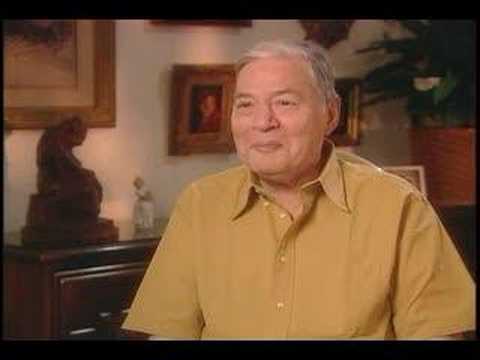
Herb Stempel remained in an apartment not far from where he lived in Forest Hills, NY, in 1959, his phone number publicly accessible. He lived well into his nineties, long retired from the Department of Transportation, Stempel and said he always knew when the film “Quiz Show” appeared on television. Invariably, frequently in the middle of the night, his phone rang and the caller asked “What film won the award for best picture of 1955?” Stempel always answered Marty, wished the caller a good evening and hung up the telephone. He passed away on April 7, 2020, aged 93
Podcast: Play in new window | Download
Subscribe: RSS
Homeless at age 19, in one of the poorest cities of the Third World, Bob Marley eventually created what Time Magazine called, “The greatest album of the Twentieth Century.

Robert Nesta Marley was born in Nine Mile, Jamaica on February 6, 1945 to Cedella Editha Malcolm and Norval Sinclair Marley. Marley’s mother, a Jamaican of African descent was 18 years old. His father, a Caucasian of British ancestry was 60. Although Norval Marley has been described as a sea captain, British army officer and even quartermaster he was in fact a laborer and construction worker who never saw military action. He lived and worked in Britain, Africa and the Caribbean and was employed as an overseer of the subdivision of the rural area around Nine Mile in the Jamaican province of St. Anne. At the time of Bob Marley’s birth, Nine Mile had neither electricity or running water.

Literally around the corner, on Third Street, a successful musician by the name of Joe Higgs routinely ran practice sessions with locals he deemed talented enough. There, Bob and Bunny met another aspiring crooner named Winston Hubert McIntosh, eventually known as Peter Tosh, and Higgs decided the trio had something special.


Finally, Bob Marley became so fed up with the situation that he decided that he would join his mother in Wilmington, Delaware. He hoped to find work and save enough money to bankroll the Wailers own production and recording efforts allowing the musicians to retain control over the profits. Before leaving, perhaps to reassure her, Bob made the decision to marry his longtime girlfriend, Rita. He promised to return and the official wedding on February 10, 1966 underlined his commitment.
Podcast: Play in new window | Download
Subscribe: RSS
18, unemployed and homeless in one of the poorest cities of the Third World, Bob Marley eventually created what Time Magazine called, “The greatest album of the Twentieth Century.”
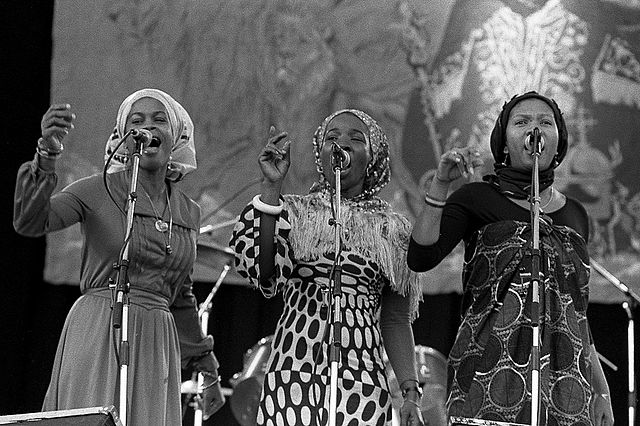
Meanwhile, in 1974, he was attempting to reorganize the Wailers and decide on his next musical direction. He needed to replace the two most prominent departed, which he did with a trio of female backing vocalists that included his wife Rita, Marcia Griffiths and Judy Mowatt, dubbed as the I-Three.

Previously a dilapidated mansion in a posh Kingston neighborhood at 56 Hope Road, a house that Bob Marley eventually purchased outright. Marley’s wife Rita was domiciled at Bull Bay, ten miles outside of Kingston, with the couple’s four children, including a son Stephen, born on April 20, 1972. Marley spent much of his time at Hope Road pursuing various relatively open romantic relationships including one with Esther Anderson, a high profile employee of Island, as well as an actress and model who starred in several Hollywood feature films.

Podcast: Play in new window | Download
Subscribe: RSS
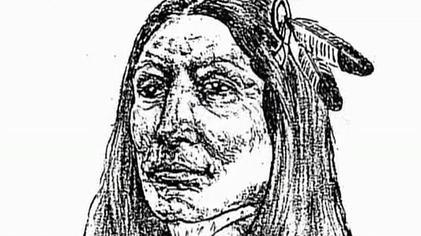
Most likely, Crazy Horse was born in the spring of 1840, in the Black Hills of western South Dakota, near Rapid City. His father was a member of the Oglala clan, also named Crazy Horse, and his mother, Rattle Blanket Woman was a Minniconju.

The Lakotas and Cheyenne were generally aware of the federal presence but believed that only a fool would attempt to attack such a large and powerful position. But, at 3 PM, attack Custer did, ordering 140 cavalry on horseback under the command of Major Marcus Reno to engage the south side of the giant native village on the western shoreline of the Little Bighorn River. Custer planned to take his command of 200 men and proceed along the river, ultimately leading an attack upon the northern side of the village.
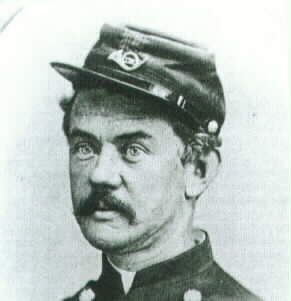
Custer’s strategy, relying on his own success at the Washita and other battlefield experience, was simple. He divided his 12 companies into three units. Three companies commanded by Major Marcus Reno would attack the encampment from the South, Three would be commanded by Captain Frederick Benteen, held in reserve to pursue any subsequent advantage and five units would be lead by Custer himself, attacking the village from the North. One unit would be held behind to customarily protect the regiment wagon train of material and ammunition.

Although weakened and disorganized, Crazy Horse and other non-treaty natives were adamant that they would not move on to a reservation. Perhaps as a further attempt to intimidate them, in 1874, Phil Sheridan ordered General Custer to march directly into the Black Hills with a force of over one thousand well-equipped soldiers. Accompanying the expedition were mining engineers who quickly determined that the entire region was replete with sizable gold deposits. Custer, a shameless self promoter, also travelled with several journalists who wasted no time in informing an economically challenged American population that gold was everywhere in the Black Hills.

Unlike previous incidents, this time there was some warning of an attack and as Reno approached, numerous warriors on foot and on horseback rapidly emerged to bring this assault to an immediate halt. The cavalry was quickly forced to dismount and set up a battle line that hastily became defensive. Several Lakota chiefs, including He Dog and Brave Heart were soon involved in the fight but as the conflict escalated, one notable combatant remained absent. The most respected and prominent Oglala warrior, Crazy Horse, was swimming in the river when the fighting started.
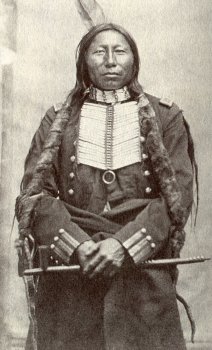
Custer’s initial strategy involved an attack on the northern edge of the encampment, splitting his companies into two units, commanded by Myles Keough and George Yates, with Custer retaining overall command. This dual assault followed natural ravines in an attempted crossing of the Little Bighorn. But Custer quickly ran into the same predicament as Reno. He also ran into Crazy Horse as well as another native column lead by the Hunkpapa warrior chief Crow King. By 4:35, Crazy Horse had traversed the two miles from the vicinity of the Reno skirmish and was now organizing a response to Custer’s aggression. The Hunkpapa and Cheyenne contingent would confront the Yates column and quickly drive it backwards in retreat while Crazy Horse lead a one and a half mile ride of the Oglalas which forded the Little bighorn river at a spot known as Deep Ravine and then attacked the Custer-Keough battalion on its right rear flank. Both battalions would eventually retreat to a spot known as Calhoun Hill. They would be surrounded by the two separate native columns, Crazy Horse leading a looping encircling movement from the Northwest, Crow King pressing the attack from the South.

Although Custer’s command is traditionally believed to have been wiped out on high ground now known as Custer Hill, how and exactly where the US detachment and Custer met their end is still a subject of academic debate. Native descriptions indicate that the entire secondary battle took little more than an hour and the last surviving troops were overwhelmed by a final charge of warriors, the conflict now a desperate hand- to-hand struggle in which soldiers had no time to reload, and natives relied on war clubs and hatchets to attack and then kill. Modern analysis indicates a final breakout attempt of two-dozen men who were trapped in a nearby canyon and then finished off. Several warriors claimed credit for killing Custer but as one native participant eventually stated: “If we could have seen where each bullet landed, we might have known. But hundreds of bullets were flying that day.”
Podcast: Play in new window | Download
Subscribe: RSS
In life a prominent Lakota warrior-chieftain, in death an American legend.
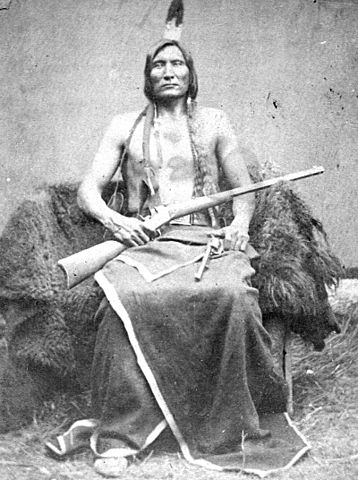
In his final moments of freedom, nervous and bewildered, Crazy Horse accepted the hand of Kennington who began to lead him to Fort Robinson’s jail within the guardhouse. Lee facilitated this process by explaining to Touch the Clouds and the others that they should stay with Crazy Horse overnight and hopefully a meeting with Bradley could happen the next day. Lee did not have the heart or the courage to admit that he knew that this would never happen.

The realization that he was about to be confined suddenly became clear to Crazy Horse. In anticipation, both Kennington and Little Big Man attempted to restrain him but he escaped their grasp and lunged for the front door. From under the red blanket he was wearing he produced a six-inch blade he typically used to cut tobacco and as Little Big Man grabbed him by both elbows, Crazy Horse cut a deep gash into his wrist. The two continued to grapple in the doorway and Crazy Horse’s blanket fell to the ground. Other natives attempted to restrain him but he continued to thrash wildly as Kennington finally drew his saber. The captain quickly realized that the crush was too great and he began shouting repeatedly to the sentry: Stab the sonovabitch! Like much of Crazy Horse’s life, what happened in the next few seconds is controversial but the result was undeniable. Clearly injured by something, Crazy Horse, yelled “let me go, you’ve got me hurt now!,” His assailants released their grip and he groaned, staggered and fell to the ground. Although official accounts would initially maintain that Crazy Horse stabbed himself with his own knife and then claim he accidentally was pushed against the bayonet of the sentry, his injury indicated otherwise.

The injured warrior was placed on his blanket and carried into the administrative office. Although an army cot was available, Crazy Horse insisted that he put on the ground. There, he was examined by an agency doctor, Valentine McGillycuddy. Understanding that Crazy Horse was slowly bleeding to death, he administered morphine intravenously, stopping the chief’s agony. Night fell upon the agency, the parade ground deserted, only Captain Kennington, an officer of the guard and an interpreter remained as an official presence. Touch the Clouds and his son, Charging First were also admitted. Eventually, Crazy Horse’s father, Waglula and one of his step mothers, Red Moccasins, arrived at the agency and found their son. Waglulla asked how he was doing. Crazy Horse replied stoically: “I am hurt bad. I am going to die. Tell the people they cannot depend on me anymore.”
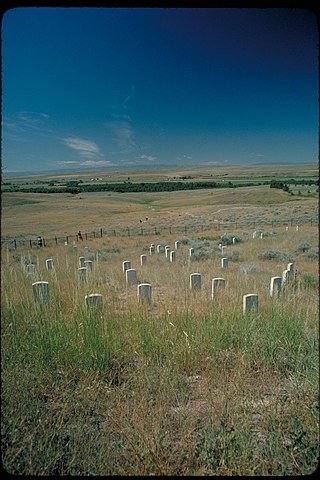
Podcast: Play in new window | Download
Subscribe: RSS
A popular actor, John Wilkes Booth used his professional access to Ford’s Theater to assassinate President Lincoln.
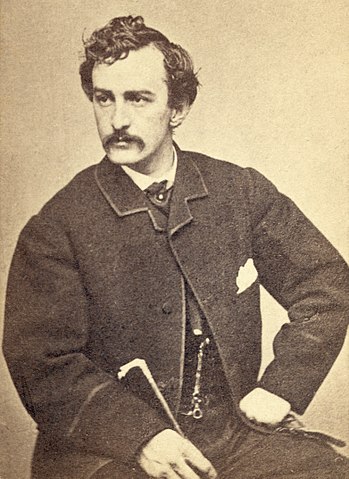
In April of 1865, Booth was an American celebrity. Having earned as much as 20,000 dollars a year, the equivalent of over 600, 000 dollars today, Booth was also described as the handsomest man in America and discretely involved with Lucy Hale, the daughter of a US Senator. But Booth was also a Confederate sympathizer and a virulent racist who was enraged by Lee’s surrender and negatively obsessed with Abraham Lincoln, especially after the President stated that black Union soldiers should be granted the right to vote.
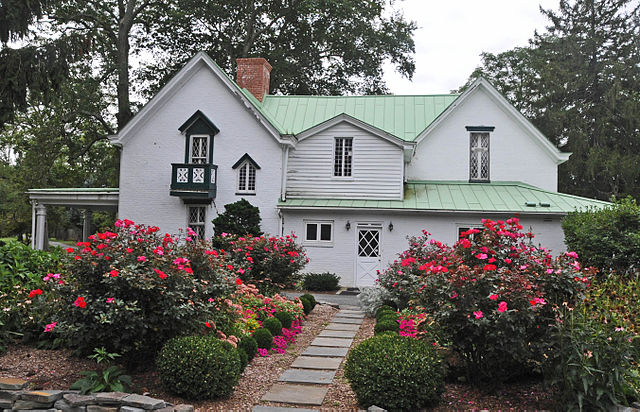
Junius Booth provided his family a rural log cabin home near Bel Air as well as a residence in central Baltimore. Eventually, he constructed a more ornate residence near the log cabin which was called Tudor Hall. It was probably fortunate that John Wilkes was sent to boarding school as a teenager, a development that afforded him distance from his father’s glum and occasionally violent personality.
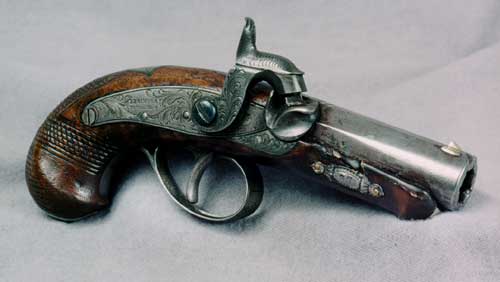
Gripping and turning the doorknob, Booth timed his entrance perfectly, the entire audience focused on a highpoint of the play. Following this access, Booth reached into the deep right pocket of his jacket, retrieved his derringer and cocked the hammer.
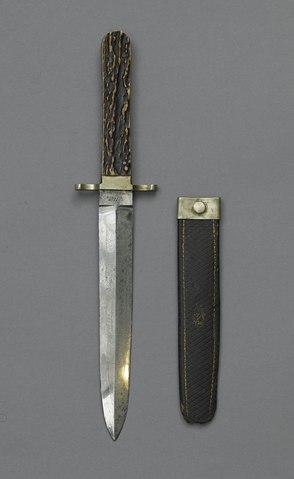
The box was briefly illuminated by the flash of the gun’s muzzle, the .44 caliber round entering the President’s skull, at a diagonal which began at the lower left of the head, below the ear and, travelling upward, lodging behind the right eye. Abraham Lincoln slumped forward, his chin resting on his chest as if he had fallen asleep. For a split second the entire theater sat silently motionless and confused. Only Major Henry Rathbone moved towards the wild eyed intruder who had invaded the box. Booth raised his knife, fully intent on stabbing Rathbone to death but the Major was able to parry the assassin’s downward thrust with his arm, incurring a deep wound near the elbow.
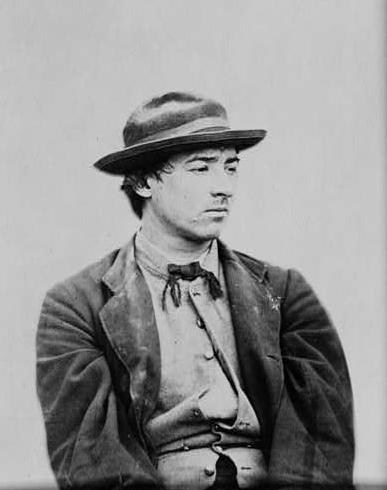
Of his three co-conspirators, Herold was the most valuable to Booth at this point of his flight. The 22 year old was an experienced outdoorsman and hunter who knew this area of the Maryland landscape, even in the darkness. Although jubilant about his attack, Booth’s broken leg was starting to cause him great difficulty. When the pair reached Surrattville, it was Herold who pounded on the door to wake up the already sleeping proprietor of the tavern, John Lloyd. Lloyd retrieved the two rifles and field glasses most likely mentioned by Mrs. Suratt earlier that evening, but Booth took only the field glasses, his injury wouldn’t allow him to hoist a gun. Herold got a bottle of whiskey as well and he and Booth took some generous swallows before paying the innkeeper a dollar as well as regaling him with the stunning news that they had killed the President and Secretary of State. Lloyd was terrified and reacted by beseeching both men to leave as quickly as possible.

About a mile away on Madison Place, the home of Secretary of State William Seward was also the scene of terrible carnage. Seward was already convalescing from the effects of an April 9 carriage accident that broke his arm and jaw. Lewis Powell would use these injuries to gain entrance to Seward’s brick mansion. David Herold, a pharmacist assistant by trade, helped concoct a small butcher paper package tied with string that Powell would claim was medicine prescribed by Seward’s doctor. Powell and Herold waited until the rooms of the mansion were darkened and the occupants were heading for bed. As Herold looked on, Lewis Powell handed him his horse and made his way to Seward’s front door. A black, nineteen year old servant named William Bell answered the knock. In front of him stood a well dressed man with a small package. Powell claimed he had medicine for Seward and even knew the proper name of the physician. Bell accepted this explanation but became adamant that Powell would have to leave the medicine with him. Powell ignored him, pushed his way inside and began to ascend the stairway to the second floor. At the top of the stairs stood Frederick Seaward, son of the Secretary, who also requested that Powell give him the medicine as the Secretary was asleep and could not be disturbed. Powell again insisted that the medicine must be delivered personally. Unbeknownst to Powell, Seward’s bedroom was only a few feet away. At this critical moment, Seaward’s daughter, Fanny, who was bedside attending her father, opened the bedroom door and told her brother that actually her father was awake. Now Powell knew exactly where his prey was but rather than aggressively barging his way in, he continued to argue with Fred Seward who insisted he either leave the medicine or go back to the doctor. Powell seemed to acquiesce but in the split second of walking down the stairs and satisfying Seward’s son that he was leaving, he quickly whirled, drawing a pistol from his coat pocket. Pointing it directly at Seward’s face, he pulled the trigger for what should have been a fatal gunshot. The gun misfired with an ominous click, but Powell began to pistol whip the smaller man into submission while William Bell ran down the stairs and out into the street shouting “murder” at the top of his lungs. After beating Fred Seward half to death, Lewis Powell tossed him aside and turned his attention to his father’s bedroom door.
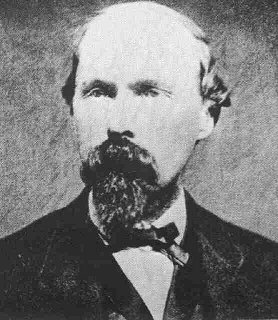
Booth sensed that his leg needed immediate medical attention, especially if he was to successfully escape. He thought of Dr. Samuel Mudd, but knew Mudd lived in a rural area that is isolated even today, near the small town of Bryantown, MD. Seventeen miles from Surrattville, it took fours hours to get to their destination, and without Herold, Booth never would have found the narrow path that lead to the doctor’s two story, bright white home. At four in the morning, Herold began to pound on another door that Dr. Mudd warily and eventually answered. Booth hung back just as wary as Mudd. Herold explained that there had been a riding accident on the way to Washington and his companion had broken his leg. Mudd recognized Booth as he emerged from the shadows and helped him up the stairs.
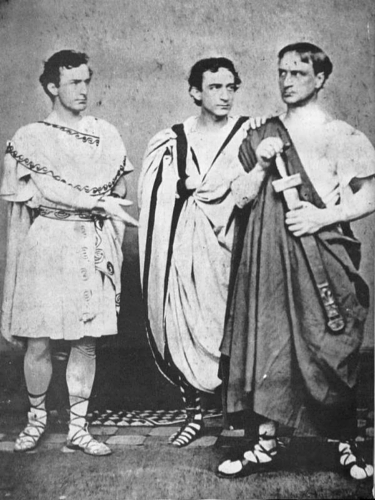
Following his Boston performances, Booth then refused any additional work, appearing on November 25, 1864 in New York with his two brothers in Shakespeare’s “Julius Caesar.” Booth promised to participate in this benefit celebrating 300 years of the author’s birth, proceeds to be donated to construct a statue of the Bard in Central Park, which still stands.
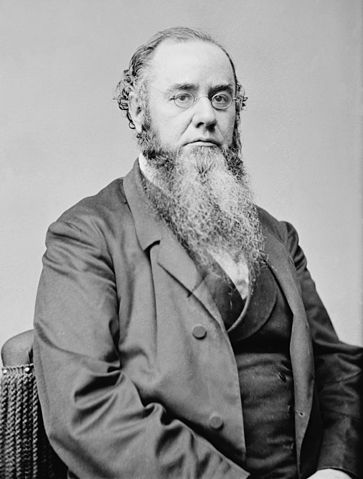
One of the first senior government officials to arrive on the scene at the Peterson House was Secretary of War Edwin Stanton. Stanton had already been to the Seward home after being informed of the attack by a messenger as he prepared for bed. Eventually hearing about the President, Stanton resolved to go to the vicinity of Ford’s Theater and take charge of the situation as quickly as possible.
Podcast: Play in new window | Download
Subscribe: RSS